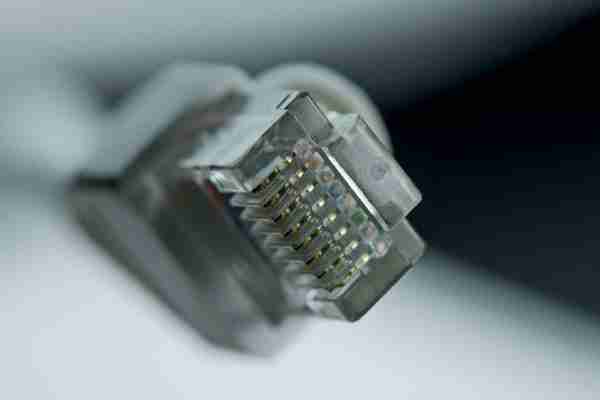FIX: Antivirus is blocking Internet or Wi-Fi network
FIX: Antivirus is blocking Internet or Wi-Fi network 804 Share X

If the antivirus is blocking the Internet or Wi-Fi connection, you won't be able to get online.
It can also be the case that the firewall is blocking the Internet so you need to investigate.
You will have to start by checking your connection and the network components.
Verifying the exceptions from your firewall can also fix this problem quickly.
X INSTALL BY CLICKING THE DOWNLOAD FILE To fix various PC problems, we recommend Restoro PC Repair Tool:
This software will repair common computer errors, protect you from file loss, malware, hardware failure and optimize your PC for maximum performance. Fix PC issues and remove viruses now in 3 easy steps: Download Restoro PC Repair Tool that comes with Patented Technologies (patent available here Click Start Scan to find Windows issues that could be causing PC problems. Click Repair All to fix issues affecting your computer's security and performance Restoro has been downloaded by 0 readers this month.
Cybercrime is a real thing and antivirus is a must if you want to protect your data, privacy, and functionality on a daily basis.
Furthermore, contemporary antivirus solutions are mostly all-in-one suits with cloud protection and firewalls, system optimization, and what not else.
However, sometimes, the aforementioned firewalls can block your Wi-Fi network, preventing you to connect to the Internet.
My antivirus is blocking my Internet! That can be a grave problem, so we thought that it’s something worth addressing in this article.
Make sure to check out the steps below and we should be able to reach the resolution of this problem in no time.
How to unblock the Internet access blocked by the antivirus?
1. Run the Internet Connections troubleshooter
Right-click the Start button and select Settings. Click on Update & Security. Now click on the Troubleshoot option from the left pane and select Additional troubleshooters from the right pane. Click on Internet Connections and hit the Run the troubleshooter button. Perform the steps provided on the screen to go through with the procedure.
Using the dedicated troubleshooter is the first thing to do in this situation. And although it may be considered basic, it helped a lot of users fix their connection.
2. Verify the connection
Firstly, let’s eliminate other possible causes for this occurrence. There are so many various reasons why your PC is unable to connect to the Internet or the Wi-Fi network of choice.
So, we advise you to follow the instructions below, and check for the alternative causes for this burning issue:
Restart your PC.
Restart your modem and router.
Use the LAN cable instead of Wi-Fi and look for changes.
Boot in Safe Mode with Networking mode and try connecting.
Run the dedicated Windows Troubleshooter.
Update router’s/modem’s firmware.
On the other, if you’re prompted by the antivirus itself and informed about the blocked network, subtly continue reading.
3. Check firewall exceptions
The antivirus or antimalware solution can’t block the internet connection per se. However, with the unifying of various security solutions into one package, we got ourselves third-party firewalls.
Those firewalls may be blocking the Internet or Wi-Fi connections. Sometimes by mistake, other times because of the justified suspicion that your network isn’t safe.
In order to regulate that, you can reconnect your router, reset all equipment like we already advised, and look for changes.
If those actions are to no avail, make sure to thoroughly inspect the Firewall part of your antimalware suite.
You can create exceptions to let individual programs (like browsers and e-mail clients) to communicate through the firewall.
This procedure varies, so make sure to google your antimalware or check the Help section in order to find out how to do it.
In addition, some users reported that large updates caused issues for various antivirus solutions. Make sure to update it again and, hopefully, the developers will provide timely patches.
4. Reset the antivirus to default settings
Expert Tip: Some PC issues are hard to tackle, especially when it comes to corrupted repositories or missing Windows files. If you are having troubles fixing an error, your system may be partially broken. We recommend installing Restoro, a tool that will scan your machine and identify what the fault is.
Click here to download and start repairing.
If you meddled with the implemented firewall on your own or a peculiar update changed something and thus blocked the internet access, you should just reset the antivirus to its default values.
That seems like the best way to resolve the problem at hand. It’s not an unusual practice for antivirus solutions to go bonkers and, with the introduction of secondary security tools, that practice flourished.
Reset everything to default values, restart your PC and look for changes. If you’re still unable to connect, there’s still one thing you can do.
5. Disable the antivirus or use another one
We can’t call this a solution but rather a workaround, but you might want to disable your antivirus or go for an alternative.
Of course, there’s always an option to contact the antivirus support and ask for help.
Maybe there’s a bug at hand with the current iteration and you pointing towards it should help developers deal with it swiftly.
If you find out that the antivirus was the problem blocking the Internet access, we strongly suggest changing your antivirus with less problematic one.
The security solution recommended below will not interfere with your system or your connection and it’s less prone to errors such as this one.
This antivirus is perfect for the modern people who use the Internet for shopping, banking, work and communication but are aware of the online risks involved.
ESET Internet Security Try using a solution that protects your privacy and security without getting in the way of your connection or system. Free trialVisit website
6. Reinstall the antivirus
Finally, if none of the previous steps proved fruitful, the only solution that we can offer is the reinstallation of the antivirus solution.
Now, before you navigate to Control Panel and uninstall the antivirus, have in mind that most of the supporting applications that come with the suit are not really essential.
Meaning: Windows Firewall is quite sufficient and you don’t need a third-party firewall unless you’re a knowledgeable user who can take advantage of extra features.
So, reinstall your antivirus, but consider installing only the antivirus this time. That should resolve your problem and you should be able to connect to the internet just like before.
In case you’re unable to do so with the standard procedure, make sure to boot in the Safe Mode and try again.
That should do it. We hope this helped you resolve your issues with firewall or antivirus blocking the Internet.
If you’re tired of the problems caused by your present antivirus, you can also take a look at our selection of the top antiviruses with unlimited licenses and pick one from there.
Don’t forget to share your experience with us in the comments section below. We look forward to hearing from you.
Still having issues? Fix them with this tool: Download this PC Repair Tool rated Great on (download starts on this page). Click Start Scan to find Windows issues that could be causing PC problems. Click Repair All to fix issues with Patented Technologies (Exclusive Discount for our readers). Restoro has been downloaded by 0 readers this month.
Antivirus is Blocking Internet on Windows 10? Here's The Fix!
Is your antivirus blocking the internet connection on Windows 10?

Whether your in-built Windows Defender or third-party software like Avast, antivirus is extremely helpful in protecting you against malware and viruses that may damage and exploit your PC.
However, they also sometimes cause problems on their own, which can prove to be problematic in your day-to-day use. One such problem is when your internet connection seemingly stops working. And unfortunately, your antivirus is a very likely culprit.
From blocking a browser to downright shutting off your PC’s internet connection, your antivirus can cause many issues for you. Luckily, we are here to help.
Let’s get started!
1. Restart Your Device.
First and foremost, we can try to resolve the issue by simply restarting your PC to fix your internet connection problem. It reboots the entire system, including programs and processes that may have caused the issue in the first place.
See the steps below to restart your Windows PC:
First, click on the Start Menu in your Taskbar. After that, access the Power tab. Lastly, select the Restart option to reboot your operating system.
Once done, try accessing the internet to check if the problem is solved.
2. Reboot Your Modem and Router.
Just like the PC, your modem and router may also have caused issues with your internet connection. However, both the modem and router do not have a user interface that allows you to check for issues.
In this case, we suggest restarting your modem or router to ensure it is initialized correctly. Unplug your router’s power cable from the wall outlet and wait for 5 to 10 seconds before reconnecting it.
Once done, launch your browser and see if you can now access the internet.
3. Clear Your Browser’s Cache.
Another quick fix is to clear your browser’s cache by heading into the settings. This clears your cookies and browser history, which may sometimes obstruct your browser’s internet connection.
To fix this, check out the steps below to clear your browser’s data:
First, open your preferred browser and access its Settings. After that, scroll down to Privacy & Security and click on Clear Browsing Data. Now, check all the boxes and change the Time Range to All Time. Lastly, hit the Clear Data button to start.
After clearing your browsing cache, try accessing any website to check if the problem is solved.
4. Set Your Browser’s Settings to Default.
Just like your stored cache, your browser settings may also cause issues for your internet. You may have accidentally selected different settings or unselected important ones.
Whatever the case, heading into your browser’s settings and resetting it may help fix your internet.
Here’s what you need to do:
On your browser, click on More Options in the upper right corner and select Settings. Next, go to the Advanced tab. After that, access the Reset and Clean Up tab. Finally, click on Restore Settings to Their Original Defaults.
Once done, visit a few websites to check if the problem would still occur.
5. Disable Your Browser’s Third-Party Extensions.
Some third-party extensions for your browser may also hamper your internet connection. If you have too many extensions installed, your internet connection may slow down and sometimes stop entirely.
To fix this, follow the guide below to disable your browser extensions:
Launch your preferred browser and go to its Settings. Next, click on the Extensions tab in the side menu. Finally, disable all your browser extensions and restart your browser.
After restarting your router, try browsing the internet to check if the problem is solved.
6. Perform Internet Connection Troubleshooter.
Before we assume that your antivirus is causing problems with your internet connection, we need to perform a troubleshoot. This will hopefully identify other possible issues that may have caused your problem in the first place.
However, note that running a troubleshooter does not always resolve your problem.
Here are the steps on how to use the Network Troubleshooter:
Press the Windows + I keys on your keyboard to open Settings. Next, select Network & Internet.
Scroll down until you find Network Troubleshooter and access it.
Finally, follow the Troubleshooter Wizard to continue with the process.
On the other hand, check out the steps below to use the Internet Connection Troubleshooter:
Inside Settings, click on Update & Security and select Troubleshoot.
Now, click on Additional Troubleshooters.
Finally, click Internet Connections and select Run the Troubleshooter.
After using Windows Troubleshooter, you have hopefully fixed your network issue.
However, if both did not resolve your problem, proceed to the following method below to address the issue.
7. Restore the Firewall Settings to Default.
The Windows Firewall filters the information that comes from the internet to your system. If your firewall detects suspicious behavior or malicious data, Windows Firewall automatically stops it from affecting your system.
However, the firewall can sometimes cause errors due to improper configurations or wrong parameters.
To fix this, follow the steps below to reset your Firewall settings back to default:
First, press the Windows + I keys on your keyboard to access Settings. Now, click on Update & Security. On the left side menu, go to the Windows Security tab.
Next, look under Protection Areas and select Firewall and Network Protection.
Once opened, click on Restore Firewalls to Default at the bottom of the page.
Finally, click Restore Defaults and follow the prompts to complete the process.
Once done, launch your web browser and see if your antivirus is still blocking internet access on Windows 10.
8. Allow Your Browser Through the Firewall.
Your firewall could also prevent applications from connecting to the internet. This may be due to suspicious behavior from the application or can be a false malware detection from the network firewall.
Regardless, users can add certain applications to an exclusion list to prevent this from happening.
Here’s how you can do it:
On your computer, click on the Start Menu and open Windows Settings. Next, go to the Update & Security tab.
After that, click on Windows Security.
Now, look under Protection Areas and select Firewall and Network Protection.
Look for Allow an App through Firewall and click it.
Once the window opened, click on Change Settings and look for the application you want to exclude from Firewall. Finally, click both checkboxes next to the application you want to allow.
You have now successfully included your browser into the firewall’s exclusion list. This should hopefully restore internet access on your browser.
This ends our guide on what to do if your antivirus is blocking the internet on Windows 10. If you have any questions, please don’t hesitate to leave a comment down below, and we’ll be here to help out.
If this guide helped you, please share it.

